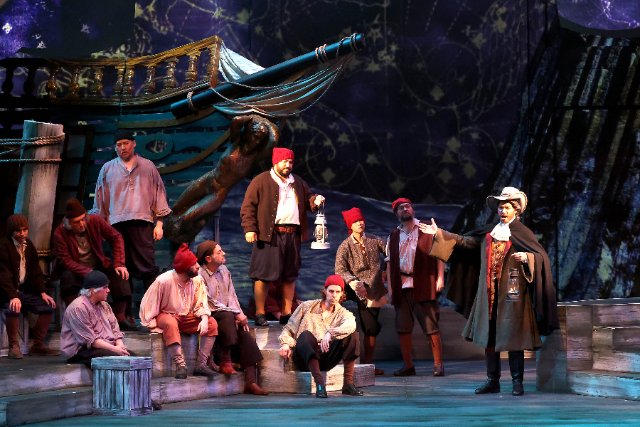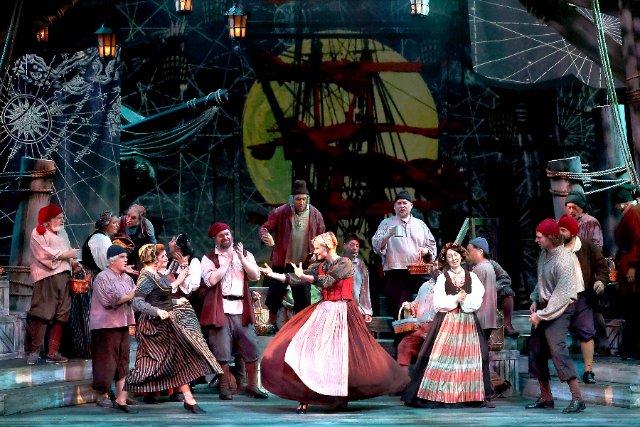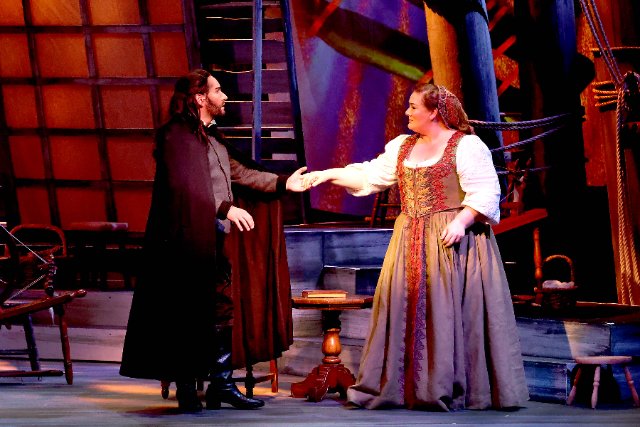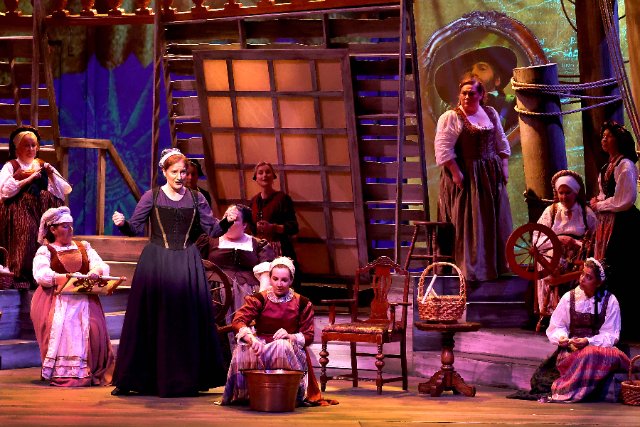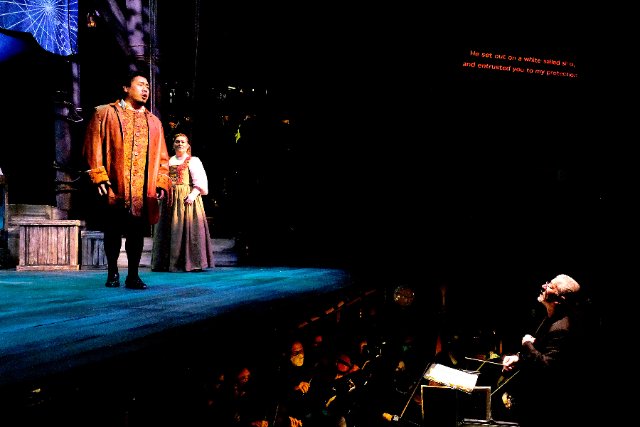Der fliegende Holländer
Robert Balonek's Vocal Power As The Dutchman Astounds.
By: Victor Cordell - May 28, 2023
Richard Wagner is most noted for his exceptional Ring Cycle, with over 12 hours of brilliant music spread over four operas. But years before he embarked on his Unbearable-Lengthiness-of-Being-Teutonic mode, he had emerged as a force in opera, the most notable auteur in the opera canon, composing music and writing his own librettos.
His breakthrough came with “Der fliegende Holländer” (“The Flying Dutchman”) in 1843. In many ways, it anticipates his grander work with the beginnings of his use of leitmotifs and rich orchestration that often imitates nature. And while this opera is sing-through in format, its strophic lines repeat, creating memorable melodies. Blessed with soaring romance-style music and a dramatic source from Heinrich Heine’s take on Celtic mythology (influenced in turn by stories of the Wandering Jew), Wagner produced his first operatic masterpiece. However, he shifted the venue to a Nordic locale more compatible with his desired social iconography. The composer was particularly empathetic toward the title character as he identified with the isolation and persecution suffered, creating a highly engaging opera centered on this desolate soul.
In this fable, The Dutchman is punished for having invoked Satan - condemned to sail a ghost ship on the seven seas eternally, except that he is allowed one port visit of one day every seven years. If he can marry a faithful wife on one of his landings, he will be redeemed and granted amnesty from his perpetual purgatory.
West Bay Opera has taken on this piece with a handsome and successful production full of fine staging and strong principal voices to conquer the composer’s vocal challenges. Wagner’s facility with orchestration comes through from the opening notes of the beautiful overture which reflects the resolute power of the sea and wind, while introducing the motifs of The Dutchman and his possible savior.
Many stage offerings demand a dominant and charismatic performance from the central character to succeed, and this is no exception. Even with this expectation in mind, the audience at opening night was blown away by Robert Balonek’s role debut performance as The Dutchman. His 10-minute opening soliloquy “Die frist ist um” (“The time is up”) was delivered with such high-wire potency that one wondered how he could sustain the performance. Even at full volume, he retains uncommonly crisp melodiousness and clarity of diction. This, despite having to cover the Wagnerian bass-baritone range and tonal variety which he accomplishes with great agility. In answer to more intimate moments, he demonstrates another gear with a mournful, more cloaked vocalization. Incidentally, he did maintain his vocal and emotional intensity throughout to give a remarkable performance.
At the time of The Dutchman’s periodic shore leave, he insinuates himself upon a ship captained by Daland, whose home is in a nearby Norwegian town. The Dutchman is laden with riches, which he offers Daland in return for his daughter’s hand. Joshua Hughes, a bass with warm tone and vibrato, portrays Daland. His delight in the transaction is uncontainable in his fine duet with the Dutchman, “Wie? Hört’ ich recht?” (“Did I hear it right?”), which the contrasting voices handle to pleasing effect.
Daland introduces The Dutchman to his daughter Senta, who was already enthralled by the legend and image of the pelagic sailor. Played by Wagnerian dramatic soprano Meredith Bloomfield, her first aria, the ballad “Johohoe! Traft ihr das Schiff im Meer an” (“There is a ship that sails the seas”) is delivered with meticulous authority, exquisitely negotiating its many vocal leaps and dramatic pauses. Bloomfield also matches up well in the bombastic duets and trios with Balonek and clarion tenor John Kun Park as her betrothed, Erik. Park also demonstrates great clarity and power in his angst over Senta’s betrayal. Ultimately, the straight forward plot resolves in a transcendent manner.
“Der fliegende Holländer” relies on only six principal singers. The score presents an unusual bi-modal tessitura, as the two leads on the male side are written for low voices, but the female side is almost all soprano. With fewer than 30 musicians, José Luis Moscovich’s orchestra admirably produces big supporting sound given its size. Lack of orchestral precision that often occurs in smaller budget opera companies occurred more than desired, but not enough to detract from appreciation of the music. Choruses of men and women filled the stage while enhancing and rounding the overall musical sound. The most satisfying outcome came when the men benefited from joining with the women in a combined chorus.
Director Ragnar Conde creates a satisfying stage experience. Company Set Designer Peter Crompton’s hand is evident in the production. Central to his style are multilevel stages with steps, vertical framing fixtures such as columns or trees, and back wall projections which appear in all three sets for this production. While the first act set is nautical with a profusion of ropes, the second contains an attractive array of spinning wheels worked by women at work with thread. Callie Floor’s costumes also enhance the sense of place and time.
Overall, strong performances in key roles enhance the production and result in a rewarding experience.
“Der fliegende Holländer” with music and libretto by Richard Wagner, based on Heinrich Heine’s “Aus den Memoiren des Herren von Schnabelewopski,” is produced by West Bay Opera and plays at Lucie Stern Theatre, 1305 Middlefield Road, Palo Alto, CA through June 4, 2023.


